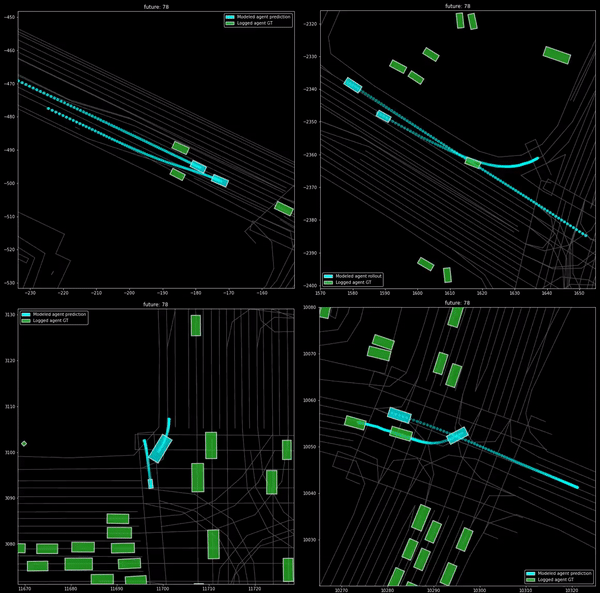Meet Waymo’s MotionLM: The State-of-the-Art Multi-Agent Motion Prediction Approach that can Make it Possible for Large Language Models (LLMs) to Help Drive Cars
Autoregressive language models have excelled at predicting the subsequent subword in a sentence without the need for any predefined grammar or parsing concepts. This method has been expanded to include continuous data domains like audio and image production, where data is represented as discrete tokens, much like language model vocabularies. Due to their versatility, sequence models have attracted interest for use in increasingly complicated and dynamic contexts, such as behavior.
Road users are compared to participants in a continuous conversation when driving since they exchange actions and replies. The question is whether similar sequence models may be used to forecast the behavior of road agents in the same way as language models capture complex language distributions in talks. Decomposing the combined distribution of agent behavior into independent per-agent marginal distributions has been a popular strategy for predicting the behavior of road agents. Although there has been progress in this direction, these marginal forecasts have limitations because they don’t take into account how the future actions of several agents will be influenced by one another, which might result in unpredictable scene-level forecasts.
To address these issues, a team of researchers from Waymo has introduced MotionLM, a unique approach for predicting the future behavior of road agents, which is a crucial aspect of safe planning in autonomous vehicles. The main idea behind MotionLM is to approach the challenge of multiple-road agent motion prediction as a language modeling work. It frames the prediction task as though it were creating phrases in a language, with the language being the actions of the road agents.
MotionLM accomplishes this without using anchors or complicated latent variable optimization procedures, unlike other existing methods that rely on them to capture various potential future behaviors. This model employs a simple language modeling goal with the objective of maximizing the average log probability of correctly anticipating the motion token sequence. The model is more approachable and simpler to train due to its simplicity.
Numerous current methods use a two-step procedure in which individual agent trajectories are first separately produced, and then the interaction between agents is assessed. In contrast, MotionLM uses a single autoregressive decoding approach to directly construct joint distributions over the future actions of numerous actors. This interaction modeling integration is more effective and seamless. Rollouts of temporally causal conditionals are also possible due to MotionLM’s sequential factorization. Predictions regarding future agent behavior are made by considering the causal linkages between events, increasing their realism and accuracy.
Upon evaluation, MotionLM has performed greatly when tested against the Waymo Open Motion Dataset. It topped the leaderboard for the interactive challenge, showing that it performs better than other approaches to forecasting the actions of road agents in challenging situations. In conclusion, MotionLM is definitely an innovative approach to multi-agent motion prediction for autonomous vehicles and is a really beneficial advancement in this field.
Check out the Paper. All Credit For This Research Goes To the Researchers on This Project. Also, don’t forget to join our 31k+ ML SubReddit, 40k+ Facebook Community, Discord Channel, and Email Newsletter, where we share the latest AI research news, cool AI projects, and more.
If you like our work, you will love our newsletter..
We are also on WhatsApp. Join our AI Channel on Whatsapp..
![]()
Tanya Malhotra is a final year undergrad from the University of Petroleum & Energy Studies, Dehradun, pursuing BTech in Computer Science Engineering with a specialization in Artificial Intelligence and Machine Learning.
She is a Data Science enthusiast with good analytical and critical thinking, along with an ardent interest in acquiring new skills, leading groups, and managing work in an organized manner.
Credit: Source link


Comments are closed.